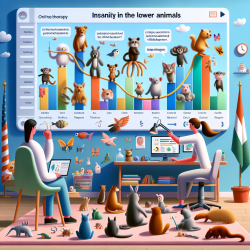Introduction
The Eleventh International Foamy Virus Conference brought together experts to discuss the latest advancements in foamy virus (FV) research. These complex retroviruses, which are prevalent in several animal species, have significant implications for human health, including cross-species transmission and potential use in gene therapy. This blog explores how practitioners can leverage the insights from this conference to enhance their understanding and application of FV research.
Key Takeaways for Practitioners
1. Understanding Cross-Species Transmission
One of the pivotal discussions at the conference was the cross-species transmission of simian foamy viruses (SFVs) to humans. Studies have shown that SFVs can be transmitted from monkeys and apes to humans, particularly in regions where humans and non-human primates coexist. Practitioners should be aware of the potential zoonotic risks associated with SFVs and consider these factors when working with populations at risk.
2. Potential of Foamy Viruses in Gene Therapy
Foamy viruses have shown promise as vectors for gene therapy due to their broad host range and large genome capacity. The conference highlighted advancements in using foamy virus vectors (FVVs) for gene delivery, emphasizing their potential in treating genetic disorders. Practitioners interested in gene therapy should consider the unique advantages FVVs offer, such as their ability to integrate large transgenes efficiently.
3. Immune Responses and Pathogenicity
Despite their widespread presence, foamy viruses exhibit minimal pathogenicity in natural hosts. The conference explored the immune responses elicited by FV infections, including the role of neutralizing antibodies and restriction factors. Understanding these immune mechanisms can help practitioners better assess the safety and efficacy of FV-based therapies.
Encouraging Further Research
The conference underscored several areas where further research is needed, such as the long-term effects of FV infections in humans and the full potential of FVVs in clinical applications. Practitioners are encouraged to contribute to this growing body of research by exploring these unanswered questions, particularly in the context of human health and disease prevention.
Conclusion
The Eleventh International Foamy Virus Conference has provided valuable insights into the potential applications and implications of foamy virus research. By staying informed and engaged with these developments, practitioners can enhance their expertise and contribute to innovative solutions in healthcare. For those interested in delving deeper into the original research, please follow this link: Eleventh International Foamy Virus Conference—Meeting Report.










